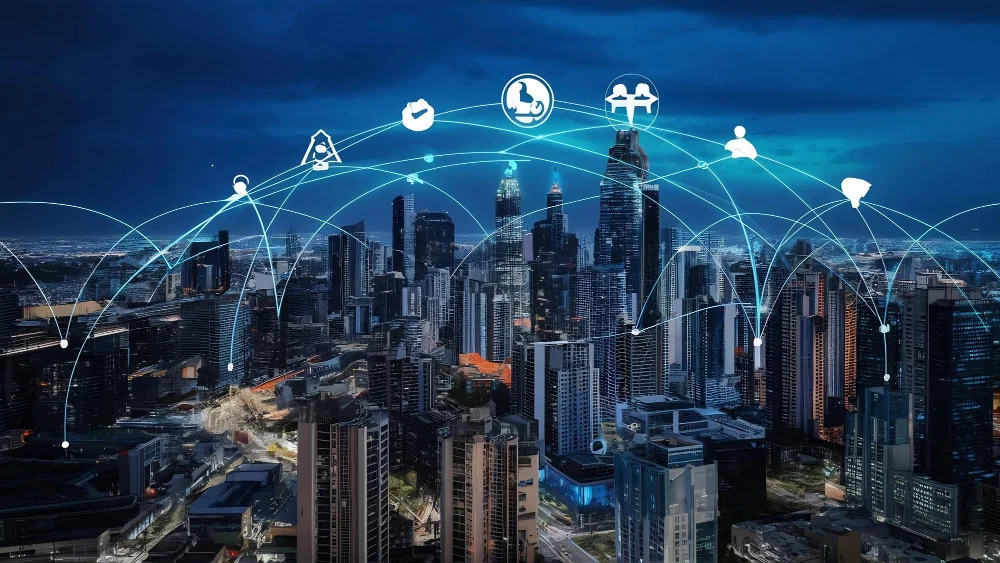The Internet of Things, often abbreviated as IoT, is a revolutionary concept that has been transforming various industries and aspects of our daily lives. From smart homes to industrial automation, IoT technology has been driving innovation and reshaping the way we interact with the world around us.
Introduction to Internet of Things (IoT)
At its core, IoT refers to the network of interconnected devices and objects that are embedded with sensors, software, and other technologies, enabling them to collect and exchange data over the internet. These devices can range from simple household appliances to complex industrial machinery, all interconnected to communicate and share information seamlessly.
Understanding IoT Technology
Definition of IoT
IoT encompasses a vast ecosystem of devices, networks, and applications that work together to create a connected environment. The primary goal of IoT is to enable devices to gather and analyze data in real-time, leading to smarter decision-making and improved efficiency.
Components of IoT
The key components of IoT include sensors, actuators, connectivity, and data processing capabilities. Sensors collect data from the environment, while actuators enable devices to perform actions based on that data. Connectivity allows devices to communicate with each other and with central systems, while data processing capabilities analyze the collected data to derive insights and trigger appropriate responses.
How IoT Works
Sensors and Connectivity
IoT devices rely on sensors to gather data from their surroundings, such as temperature, humidity, or motion. These sensors then transmit the collected data to central servers or cloud platforms using various connectivity technologies, such as Wi-Fi, Bluetooth, or cellular networks.
Data Processing and Analytics
Once the data is collected, it is processed and analyzed to extract meaningful insights. This may involve detecting patterns, predicting future outcomes, or triggering automated actions based on predefined rules. Advanced analytics techniques, including machine learning and artificial intelligence, play a crucial role in extracting value from IoT data.
Applications of IoT
IoT technology has a wide range of applications across various industries, including:
Smart Home
In the smart home sector, IoT devices enable homeowners to automate and control various aspects of their living spaces, such as lighting, heating, security, and entertainment systems, using smartphones or voice commands.
Healthcare
In healthcare, IoT devices are used for remote patient monitoring, medication management, and improving the efficiency of medical equipment and facilities. IoT-enabled wearables and sensors can track vital signs, detect abnormalities, and alert healthcare providers in real-time.
Agriculture
In agriculture, IoT solutions are used to monitor crop conditions, optimize irrigation and fertilization processes, and automate tasks such as planting and harvesting. This helps farmers improve crop yields, reduce resource wastage, and make data-driven decisions to maximize profitability.
Transportation
In the transportation sector, IoT technology is used for fleet management, vehicle tracking, and improving road safety. IoT-enabled sensors and GPS devices provide real-time data on vehicle location, fuel consumption, and driver behavior, allowing companies to optimize routes, reduce costs, and enhance customer satisfaction.
Benefits of IoT
Efficiency and Automation
One of the primary benefits of IoT is its ability to streamline processes and automate tasks, leading to increased efficiency and productivity. By connecting devices and systems, IoT enables seamless communication and coordination, reducing manual intervention and minimizing errors.
Enhanced Decision Making
IoT generates vast amounts of data that can be analyzed to gain valuable insights into operations, customer behavior, and market trends. This data-driven approach empowers businesses to make informed decisions, identify opportunities for improvement, and stay ahead of the competition.
Improved Quality of Life
In addition to its commercial applications, IoT technology has the potential to improve the quality of life for individuals and communities. From healthcare monitoring to smart energy management, IoT solutions can enhance safety, convenience, and sustainability, contributing to a better standard of living.
Challenges and Risks
Despite its numerous benefits, IoT also presents several challenges and risks that need to be addressed, including:
Security Concerns
The interconnected nature of IoT devices makes them vulnerable to cyberattacks and data breaches. Weak security measures, such as default passwords and unencrypted connections, can expose sensitive information and compromise user privacy.
Privacy Issues
IoT devices collect a vast amount of personal data, raising concerns about privacy and data protection. Users may be unaware of the data being collected or how it is being used, leading to potential privacy violations and misuse of information.
Interoperability
Another challenge in the IoT ecosystem is interoperability, or the ability of different devices and systems to work together seamlessly. Incompatibility between devices from different manufacturers can hinder integration efforts and limit the scalability of IoT solutions.
Future of IoT
Despite these challenges, the future of IoT looks promising, with continued growth and expansion expected in the coming years. As technology advances and connectivity becomes more widespread, we can expect to see:
Growth and Expansion
The number of connected devices is projected to grow exponentially, reaching tens of billions in the next decade. This proliferation of IoT devices will create new opportunities for innovation and disruption across industries, driving economic growth and societal transformation.
Emerging Trends
Several emerging trends are shaping the future of IoT, including edge computing, 5G connectivity, and artificial intelligence. Edge computing allows data processing to be performed closer to the source, reducing latency and improving responsiveness. 5G networks promise faster speeds and lower latency, enabling more real-time applications and seamless connectivity. Artificial intelligence and machine learning are enhancing the capabilities of IoT systems, enabling predictive analytics, autonomous decision-making, and personalized experiences.
Conclusion
In conclusion, the Internet of Things is revolutionizing the way we interact with technology and the world around us. By connecting devices, collecting data, and enabling intelligent decision-making, IoT is driving efficiency, innovation, and convenience across various industries and applications. However, it also poses challenges in terms of security, privacy, and interoperability that must be addressed to unlock its full potential.

